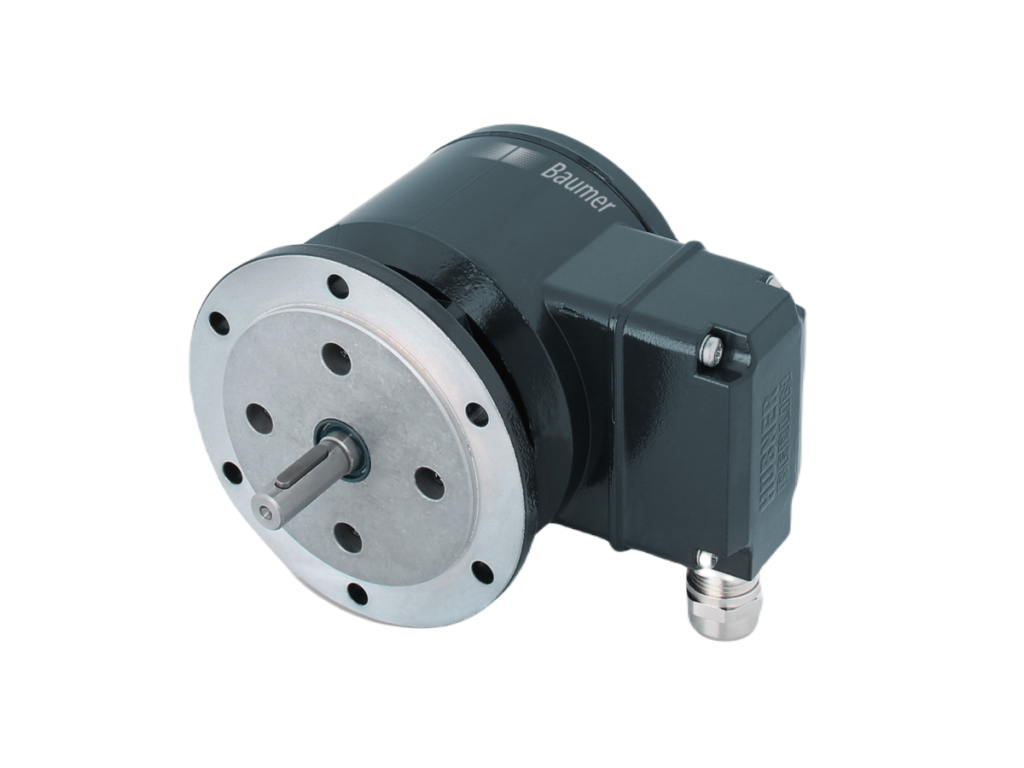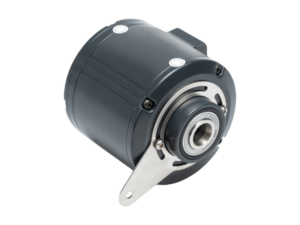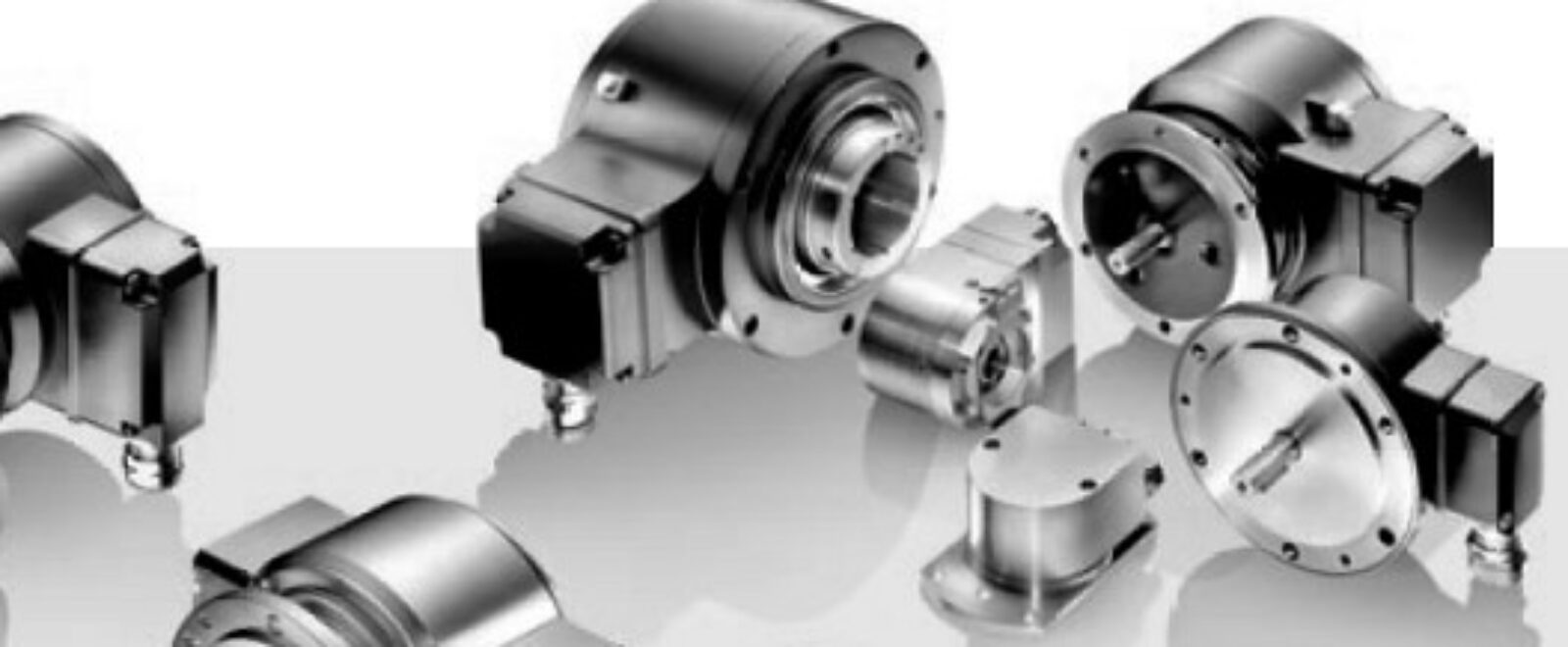In today’s advanced industrial and automation environments, accurate positioning and motion feedback are indispensable. Encoders are the key components that make this possible. But not all encoders are created equal. Understanding the various types of encoders and their specific advantages is essential for selecting the right solution for your motion control system.
This blog explores the main categories of encoders, their operational principles, and how each type is applied across industries Euro HÜBNER Benelux B.V. proudly serves. Whether you’re new to the technology or looking to upgrade your systems, knowing the different types of encoders will guide you to the best choice for your needs.
What do encoders do?
Encoders are motion-sensing devices that detect position, speed, direction, and distance. By converting mechanical motion into digital or analogue signals, they feed vital data into motion control systems. This information is then used to monitor and regulate mechanical processes in real time.
Without encoders, it would be nearly impossible to automate complex machinery with the level of precision modern industry demands. From elevators and robotics to cranes and conveyor systems, encoders ensure operations run smoothly, safely, and efficiently. To learn the basics, read our dedicated article on what are encoders for a foundational understanding of how these essential devices work.
To better understand the different types of encoders, it’s important to know how encoders can be classified.
Most common types of encoders
Encoders can be divided into multiple types of encoders based on the kind of signal they produce, the sensing technology they use, and the nature of motion they track.
1. Incremental encoders
Incremental encoders output a continuous stream of pulses as the shaft rotates. These pulses represent relative motion and are used to determine speed, direction, and position changes. However, they do not retain position data when power is lost, making them ideal for systems where reference points can be reset easily.
Euro HÜBNER Benelux B.V. offers a selection of high-performance incremental encoders, including:
- POG10: Known for its rugged construction and high precision in harsh industrial environments.
- HOG71: Designed for heavy-duty applications, combining durability with top-tier performance.
- POG83: A compact, flexible encoder well-suited for space-constrained systems.
- OG71: Provides stable and accurate feedback for speed and position in demanding setups.
Their simplicity allows them to be integrated into many existing systems without the need for extensive reconfiguration. Incremental encoders are also known for fast response times, making them suitable for high-speed applications.
To understand their benefits and compare them to other options, see our guide on the difference between incremental and absolute encoders.

2. Absolute encoders
Unlike incremental encoders, absolute encoders assign a unique digital code to each position of the shaft. This means they always know their position, even after a power interruption. They’re essential in applications where positional accuracy and continuity are critical.
Some of the advanced absolute encoders offered by Euro HÜBNER Benelux B.V. include:
- HMG10-B SSI: Offers robust, high-resolution feedback, ideal for automated control systems requiring exceptional precision.
- HMG10 T – PROFIBUS: Integrates absolute encoder technology with PROFIBUS compatibility for seamless industrial communication.
- PMG10 – PROFINET: Built for high-speed data transmission and integration into PROFINET-based control systems.
Absolute encoders can be further divided into single-turn and multi-turn versions. Single-turn encoders provide position data within one revolution of the shaft, while multi-turn encoders can track position over multiple revolutions. This makes them indispensable in robotics, servo motors, and automated platforms where continuity and safety are paramount.

Sensor technologies behind encoders
Another way to differentiate between types of encoders is by the sensing technology they use. The three primary methods are optical, magnetic, and capacitive.
Optical encoders
Optical encoders are among the most widely used. They work by shining a light through a coded disc and detecting interruptions in the light using photodetectors.
Pros:
- Very high resolution
- Excellent for clean environments
Cons:
- Sensitive to dust, dirt, and vibration
These encoders are particularly effective in environments where high accuracy and resolution are required. They are available in both incremental and absolute forms, making them flexible for many applications. However, they should be installed in clean, protected environments to prevent contamination and interference.
Magnetic encoders
These encoders detect changes in magnetic fields as the shaft turns. They are well-suited for tough industrial settings where contaminants or high vibration might interfere with optical systems.
Pros:
- Robust and reliable
- Operates in harsh conditions
Cons:
- Generally lower resolution than optical
They are ideal for outdoor or mobile applications due to their resistance to moisture and temperature fluctuations. Magnetic encoders are often used in conjunction with feedback systems to support safety-critical processes.
Capacitive encoders
Capacitive encoders use variations in capacitance between a stationary and moving component to measure displacement.
Pros:
- Compact and energy-efficient
- Immune to electromagnetic interference
Cons:
- Limited availability in some markets
Their energy-efficient design makes them suitable for embedded systems and low-power industrial automation. They are immune to many external factors like magnetic fields and electrical noise, making them ideal for environments with heavy electronic interference.
Linear vs. rotary encoders
Among the types of encoders, another classification is based on the kind of motion they measure, either rotary or linear.
Rotary encoders
These measure angular movement of rotating shafts. Rotary encoders are commonly found in motors, drive systems, and robotic joints. They are widely used in motion control systems requiring rotational precision.
Euro HÜBNER Benelux B.V. offers rotary encoders tailored for industrial use, with housings and components designed to resist dust, oil, and vibration. These encoders can be easily integrated into custom or existing setups, providing scalable solutions for both small and large-scale machinery.
Linear encoders
Linear encoders measure straight-line movement and are often used in CNC machines, coordinate-measuring machines (CMMs), and other precision tools. They are essential in applications where high-accuracy position feedback is required over a fixed linear path.
Euro HÜBNER Benelux B.V. supports linear encoder solutions that offer long measuring lengths, high speed, and minimal signal lag, ensuring consistent feedback even in fast-moving applications.
How encoders work with electromagnetic brakes
In many safety-critical applications, encoders work in tandem with electromagnetic brakes to ensure secure positioning and safe halts. While encoders handle motion tracking, electromagnetic brakes provide the stopping power during faults or power loss. This pairing is essential in lifting systems, cranes, and automated guided vehicles where operational safety and precision are vital.
For example, when used in crane hoisting systems, encoders continuously track the position and speed of the motor shaft, while electromagnetic brakes engage if speed thresholds are exceeded or power is lost, preventing accidents and damage.
Want to know more about electromagnetic brakes? Read our article ‘’what are electromagnetic brakes’’ for more information.

How to choose the right encoder
Selecting from the various types of encoders depends on your specific application. Here are some factors to consider:
- Required accuracy and resolution: Applications with tight tolerances benefit from high-resolution optical or absolute encoders.
- Environmental conditions: Harsh environments call for rugged designs, such as magnetic or capacitive types.
- Power loss tolerance: If retaining position after a power outage is important, absolute encoders are the clear choice.
- Budget and system complexity: Incremental encoders offer simplicity and cost-efficiency for less demanding tasks.
Euro HÜBNER Benelux B.V. provides a wide range of encoder solutions tailored for these variables. Our experts help you select the optimal product, whether for heavy-duty cranes, paper mills, wind turbines, or marine equipment. We also assist in full system integration with braking systems, encoders, and drives to ensure reliable motion control performance.
Conclusion
Understanding the different types of encoders is key to building a responsive, accurate, and efficient motion control system. Whether your application demands the simplicity of incremental technology or the fail-safe capabilities of absolute encoding, Euro HÜBNER Benelux B.V. offers solutions you can rely on.
We combine technical expertise with high-performance products from trusted manufacturers to ensure your automation goals are not just met, but exceeded.
Need help selecting the right encoder? Contact us today to discuss your project requirements.
Frequently asked questions about encoders
-
What are the main types of encoders?
Encoders are typically divided into incremental and absolute encoders. Incremental encoders measure changes in position, while absolute encoders provide a unique position value for every shaft angle, even after power loss.
-
How do encoders operate?
Encoders operate by converting rotary or linear motion into digital or analogue signals. These electrical signal outputs are used by motion control systems to determine speed, direction, and position.
-
What are encoders generally used for?
Encoders are essential components in machine tools, robotics, cranes, and automation systems. They are widely used in industrial applications to improve accuracy, safety, and efficiency.
-
What’s the difference between analog and digital encoders?
Encoders may output signals as either analog or digital. Digital signal encoders provide binary output, while analog types provide continuous signal ranges to represent position.
-
How does a magnetic encoder work?
Magnetic encoders rely on changes in magnetic fields. The sensor detects the change and converts it into an electrical signal. This is particularly effective in environments with dust, moisture, or vibration.
-
What’s inside of the encoder?
An encoder consists of a rotating disc, a sensor (optical, magnetic, or capacitive), and electronics to process the signals. The sensor reads the position and sends the output signal generated to a controller.
-
Do encoders need referencing?
Incremental encoders must be referenced to a home position after each power cycle. Absolute encoders do not require referencing, as they retain their position information.
-
Can encoders detect direction of movement?
Yes. Encoders detect the direction of movement using two output channels (A and B). The controller determines the motion direction by comparing the phase shift between them.
-
Are encoders used to measure linear motion?
Yes. Linear encoders are used to measure linear displacement in CNC machines and other precision equipment. These are linked to a scale and are highly accurate.
-
What affects encoder performance?
The type of environment, resolution required, position of the motor, and sensor used all impact performance. Choosing the correct encoder type ensures optimal results for motion control applications.
